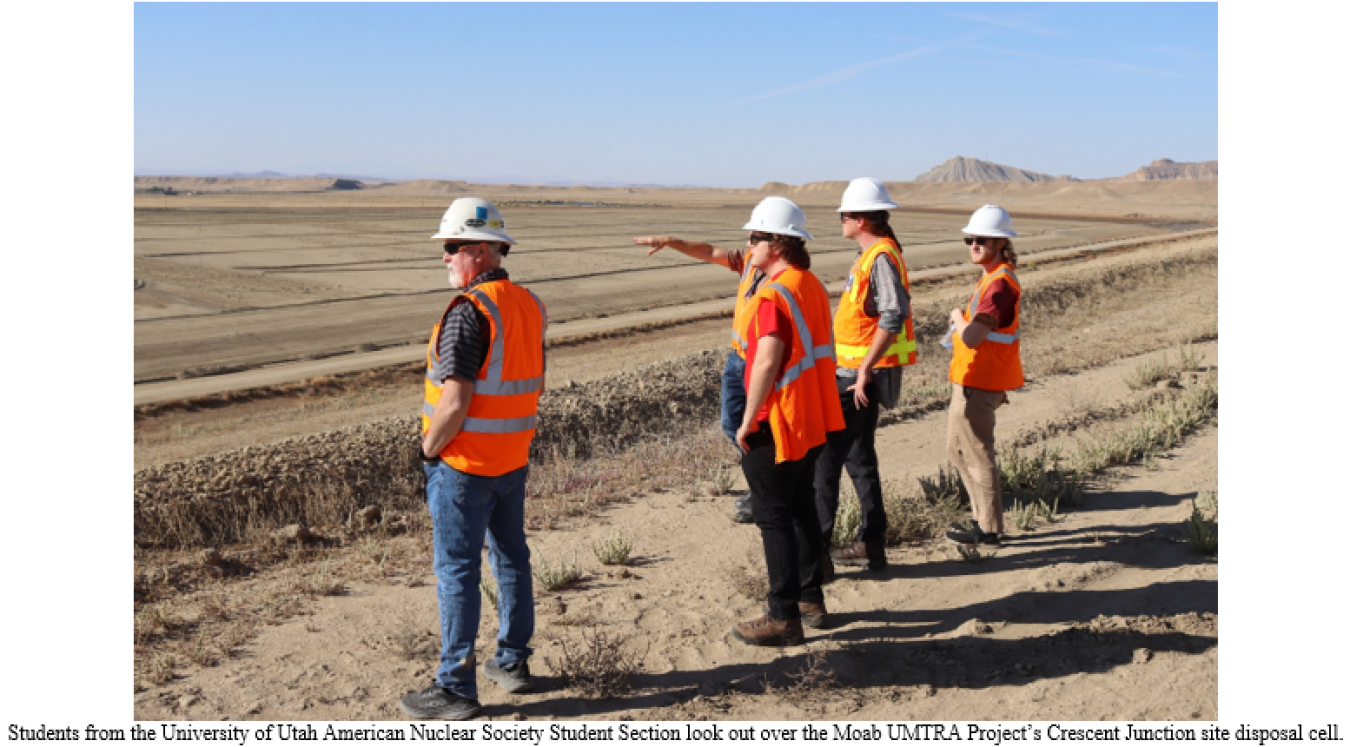Students from the University of Utah’s American Nuclear Society (ANS) Student Section recently toured the U.S. Department of Energy (DOE) Office of Environmental Management’s (EM) Moab Uranium Mill Tailings Remedial Action (UMTRA) Project sites.
November 8, 2024
Student Group Tours Moab UMTRA Project Sites
On October 10, 2024, members of the ANS Student Section from the University of Utah toured both the Moab and Crescent Junction sites of the Moab UMTRA Project, interacting with federal staff and project experts.
At the Moab Site, the group observed work operations, seeing close-up the multipart process of tailings removal, which has been ongoing since 2009. When DOE took possession of the property in 2001, an estimated 16 million tons of uranium mill tailings were present. To date, DOE has removed a cumulative 15 million tons of that pile.
While at the Moab Site, the group also toured the well field, learning about the project’s groundwater interim action activities, which protect the nearby Colorado River from site contaminants.
Thirty miles north at the Crescent Junction site, the group was able to watch the second step in the tailings journey – disposal cell placement. Since the engineered disposal cell is in the process of being filled, the group was able to see active tailings placement and compaction and learn about the proposed Evapotranspiration Cover which will be the upper-most layer or “cap” on the cell.
“It was great to have the students visit our site to learn first-hand about the ongoing cleanup work that DOE is doing. We want to encourage students, especially those in science and engineering, by giving them real world examples and experience. These individuals could potentially be the future of DOE,” said Moab Project Engineer Chris Pulskamp
Contributor: Barbara Michel

